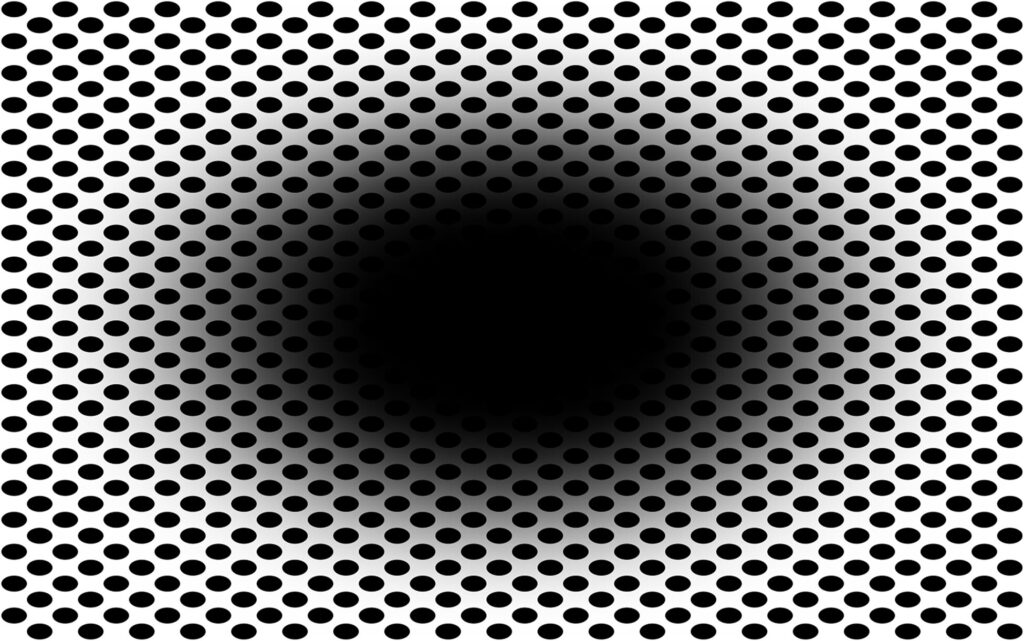
Looking at this image, do you perceive that the central black hole is expanding, as if you’re moving into a dark environment, or falling into a hole? If so, you’re not alone: a new study published in Frontiers in Human Neuroscience shows that this ‘expanding hole’ illusion, which is new to science, is perceived by approximately 86% of people.
The study’s first author, Professor Bruno Laeng at the University of Oslo, explained: “The ‘expanding hole’ is a highly dynamic illusion: The circular smear or shadow gradient of the central black hole evokes a marked impression of optic flow, as if the observer were heading forward into a hole or tunnel.”
Optical illusions aren’t simple curiosities: researchers study them to better understand the complex processes our visual system uses to anticipate and make sense of the visual world.
In the new study, Prof Laeng and colleagues demonstrated that the ‘expanding hole’ illusion deceives the brain so well that it even prompts a dilation reflex of the pupils to let in more light, just as if the observer was entering a dark area.
“Here we show based on the new ‘expanding hole’ illusion that that the pupil reacts to how we perceive light – even if this ‘light’ is imaginary like in the illusion – and not just to the amount of light energy that actually enters the eye. The illusion of the expanding hole prompts a corresponding dilation of the pupil, as it would happen if darkness really increased,” said Prof Laeng.
Prof Laeng and colleagues explored how the colour of the hole (besides black: blue, cyan, green, magenta, red, yellow, or white) and of the surrounding dots affect how strongly we mentally and physiologically react to the illusion. On a screen they presented variations of the “expanding hole” image to 50 women and men with normal vision, asking them to rate subjectively how strongly they perceived the illusion. While participants gazed at the image, the researchers measured their eye movements and their pupils’ unconscious constrictions and dilations. As controls, the participants were shown “scrambled” versions of the expanding hole image, with equal luminance and colours, but without any pattern.
The illusion appeared most effective when the hole was black. Fourteen percent of participants didn’t perceive any illusory expansion when the hole was black, while 20% didn’t if the hole was in color. Among those who did perceive an expansion, the subjective strength of the illusion differed markedly.
The researchers also found that black holes promoted strong reflex dilations of the participants’ pupils, while coloured holes prompted pupil to constriction. For black holes, but not for coloured holes, the stronger participants rated their perception of the illusion, the more their pupil diameter tended to change.
Minority not susceptible
Just why a minority seem unsusceptible to the “expanding hole” illusion is still unclear. It is also not known whether other vertebrate species, or even nonvertebrate animals with camera eyes such as octopuses, might perceive the same illusion as we do.
“Our results show that pupils’ dilation or contraction reflex is not a closed-loop mechanism, like a photocell opening a door, impervious to any other information than the actual amount of light stimulating the photoreceptor. Rather, the eye adjusts to perceived and even imagined light, not simply to physical energy. Future studies could reveal other types of physiological or bodily changes that can ‘throw light’ onto how illusions work,” concluded Prof Laeng.
Source: Frontiers

